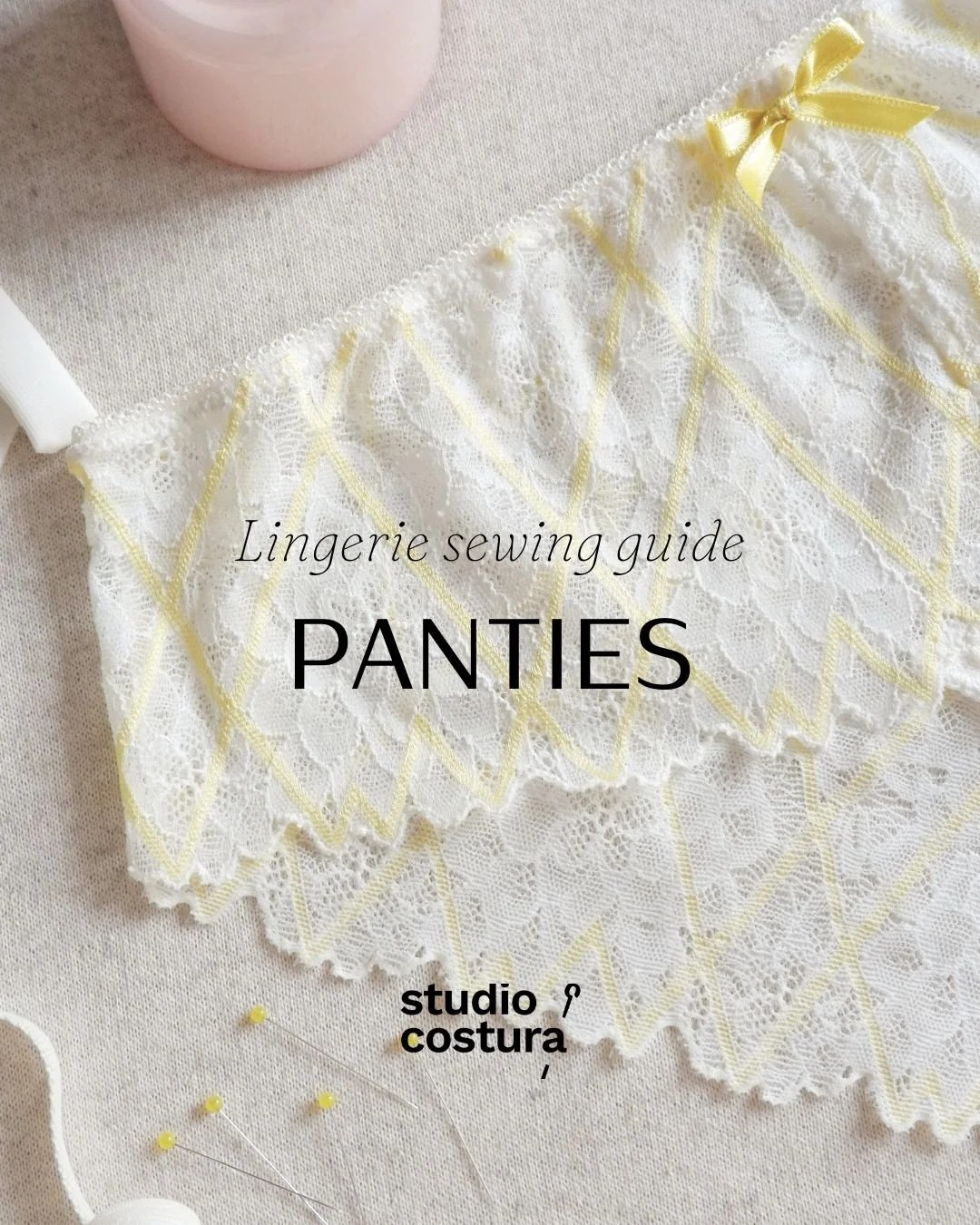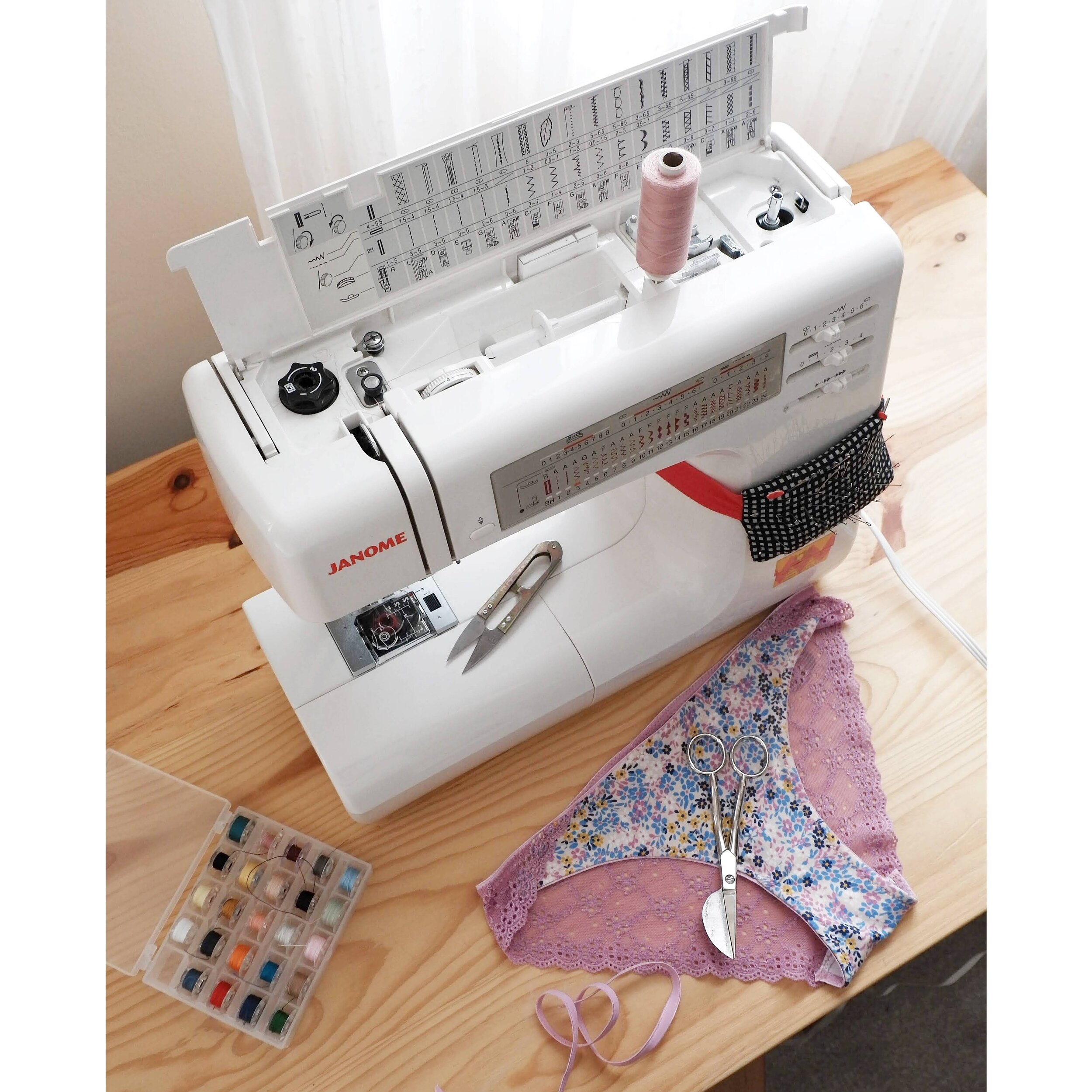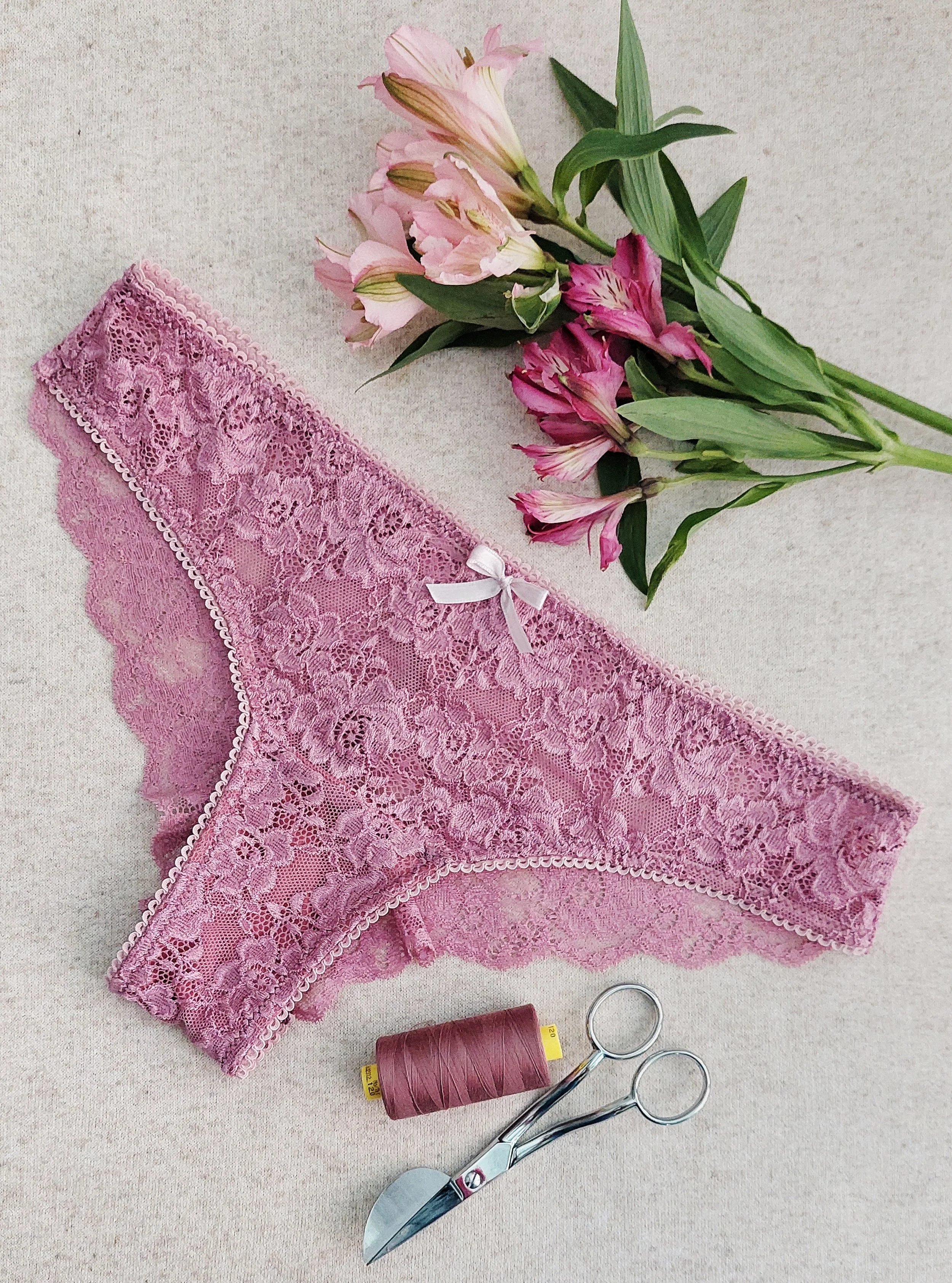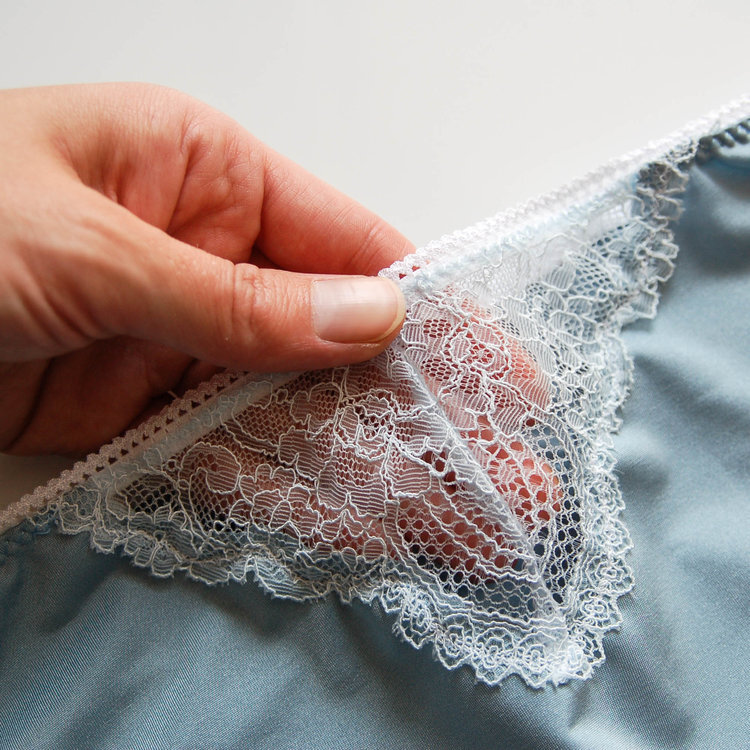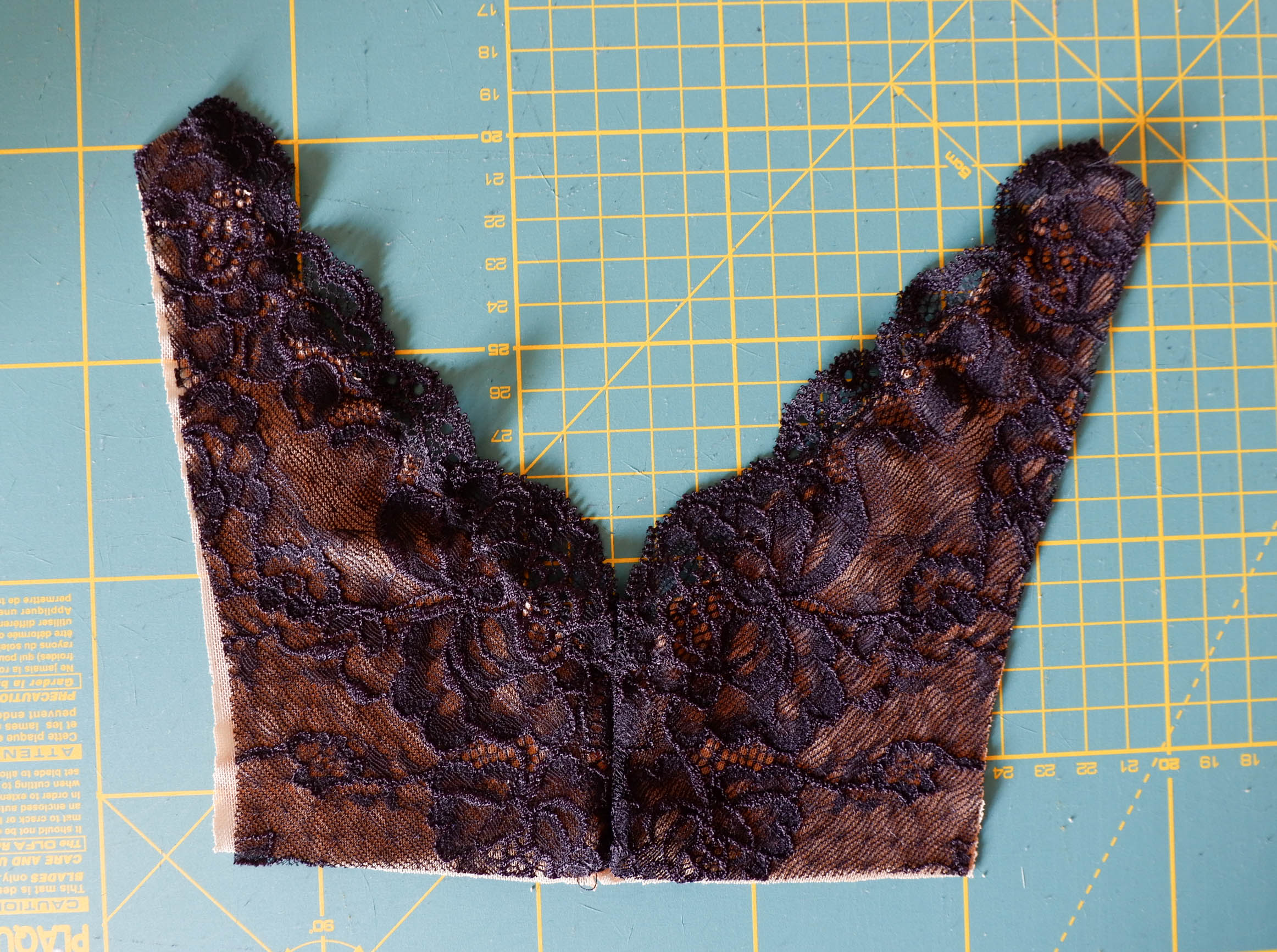*Este post ha sido actualizado el 2 de noviembre 2020.
Hola! Ya estamos en septiembre, el mes que más me gusta. Al contrario de tener un bajón por volver a la rutina, me hace mucha ilusión empezar nuevos proyectos (aunque siempre con algo de incertidumbre, jeje). Como “todo es nuevo en septiembre” quería empezar este nuevo año escolar con una serie de posts que sean como una guía para la gente que quiere empezar a coser lencería. Si lees este blog desde hace tiempo, sabrás que he escrito bastante sobre el tema y tengo muchos tutoriales en los archivos. Eso sí, nunca he hecho una guía más completa y creo que es una buena manera de animar a más gente que pruebe a coser su propia lencería. Voy a basarme en mi experiencia e intentaré darte mis consejos sobre el tema, cada uno desde luego tiene un nivel diferente e intereses distintos también, pero espero que esto te sirve como una pequeña referencia si te sientes algo perdida ante este campo quizás un poco distinto comparado con el resto del mundo de costura.
Quiero repartir esa guía en tres partes, empezando por el más fácil, coser braguitas. Sé que muchas tienen la tentación de lanzarse enseguida con lo más difícil: coser sujetadores con aros. Eso era lo que hice yo también en mi momento. Pero ahora mirando hacia atrás en el tiempo, pienso que sería mucho más fácil empezar con algo menos elaborado y así paso a paso, sin estrés, seguir avanzando cada vez con cosas más difíciles. Pero la elección es tuya, aquí te contaré mis consejos. Primero y lo más importante: esto no es tan difícil como parece, de verdad. Lo segundo y muy importante también: es un tema nuevo y requiere práctica, no intentes saltar pasos, necesitas tiempo para mejorar las técnicas de costura. Por favor no te obsesiones con hacerlo todo perfecto a la primera. Aprende, practica y disfruta!
*This post has been updated on 2nd of November, 2020
Hey! Finally September, my favorite month. Instead of feeling down as we all need to get back into the daily routine I’m actually really waiting for all the new projects coming up (well, a bit of not knowing what the year will bring is happening too, hehe). As “everything is new in September” I wanted to write a series of posts about starting to make your own lingerie. If you’ve been reading this blog for a while now you’ll know that I’ve written quite a lot about this topic and there are many tutorials in the archives. But I never made a specific post with guidelines and I think it would be a great way to introduce more sewers to this world. Everyone has different levels and diffrent interests too but I hope this will serve you as a reference if you feel a bit overwhelmed about this subject that is little bit different from the rest of the sewing world.
I wanted to divide the topic in three parts and I’ll first write about sewing panties. I know that many people would like to dive all in from the beginning and make an underwired bra to start with. This is what I did when I first started out. But now, looking back in time I’d recommend people to start with something easier and then you can move on to more advanced projects, step by step. But the choice of course is yours, I’ll give you my tips here. First and the most important: this is not so complicated as it might look like, really. Second and also very important: it’s a new subject and it requires practice, don’t try to run ahead, you’ll need time to get better when sewing. Please don’t obsess with getting perfect results from the very beginning. Learn, practice and enjoy!
Braguitas
Coser braguitas es una manera ideal para empezar a coser lencería. Es un proyecto relativamente rápido, no necesitas mucho material y queda bien en la mayoría de casos. Primero te cuento los materiales y herramientas que necesitas.
Máquina
Toda la lencería se puede coser con la máquina doméstica, no hace falta tener la remalladora. Si lo tienes, guay, pero si no, tampoco pasa nada. Necesitas aguja para telas de punto (stretch, jersey, super stretch etc) y la máquina que cosa la puntada de zig-zag (puntada que hace que no se rompa el hilo una vez que estires la prenda). Pueder leer sobre máquinas de coser y cómo elegir una para coser lencería aquí.
Tela
La mayoría de los patrones de braguitas se cosen con telas de punto (existen también los de estilo más vintage que se cosen con telas planas pero no voy a hablar sobre este tema por el momento). Puntos de algodón, viscosa y de poliéster te valen, lo único es que deberían tener algo de elastano para que el tejido no pierda su forma una vez que lleves la prenda. La tela debería ser más bien finita porque telas más gruesas abultan mucho una vez que coses los elásticos. Para mí, las telas más cómodos son las que tienen elasticidad en las dos direcciones. Para el forro de la entrepierna se recomienda usar punto de algodón (allí incluso podrías reciclar alguna camiseta vieja).
Elásticos
Los elásticos de lencería (puedes leer más sobre este tema en este post) para las braguitas suelen ser de 5-10mm de ancho (dependiendo de tu gusto) y son elásticos que muchas veces tienen un lado con algo decorativo como por ejemplo la puntilla. Son suaves y vienen en un montón de colores, puedes ver una variedad por ejemplo en mi tienda.
Suelo usar el elástico de lencería para la cinturilla de las braguitas y para las aberturas de las piernas. También puedes usar para las piernas por ejemplo bies elástico (FOE), puntillas elásticas o incluso puedes doblar el margen de costura y coser un dobladillo usando la aguja doble de punto o con un zig-zag normal.
Panties
Sewing panties is a great way to start sewing lingerie. It’s a reasonably fast project, you don’t need a lot of supplies and it almost always turns out pretty. First a little bit about the materials and supplies you’ll need.
sewing machine
You can sew all the lingerie with a domestic sewing machine, you don’t need a serger. If you have one it’s great, but if you don’t it’s not a problem at all. You will need to use a ballpoint needle for your sewing machine (stretch, jersey, super stretch etc denomination) and the machine has to have a zig-zag stitch option (this stitch makes is possible to stretch the elastics once you put the garment on). You can read a post about sewing machines + tips about choosing one for sewing lingerie here.
fabric
Most of pantie patterns require knit fabrics (there are also vintage inspired patterns that use woven fabrics but I won’t talk about these at the moment). Cotton, viscose and polyester knit fabrics are all suitable, you just need them to have some spandex in them so they won’t lose their shape once you wear the garment. The fabric should be quite light weight as medium weight fabrics tend to be too bulky once you sew the elastics on. I find the 4-way stretch fabrics the most comfortable for panties. For the gusset lining you should use a 100% cotton knits (you can even recycle old t-shirts for that purpose).
elastics
The lingerie elastics for panties (you can read more about the elastics in this post) usually have a 5-10mm width (it depends on your preference really). Most of them have a decorative edge, for example a scalloped side. These elastics are soft and come in a variety of colors, you can take a look at the section in my shop for example.
I usually use lingerie elastics for the waist opening of the panties and also for the leg openings. You can also use fold over elastic (FOE) and narrow lace trims for the leg openings. And there’s also a possibility of sewing a folded “hem” by folding the seam allowance under and using either a knit double needle to stitch them down or sew them with a normal zig-zag stitch.
Para tu primer par de braguitas te recomiendo usar tela de punto y coser elástico de lencería tanto en la cinturilla como en las piernas, es más fácil que FOE por ejemplo y luego ya puedes ver qué otros acabados te pueden gustar. El primer par suele salir...pues un poco como un churro. Pero no te desesperes, lo más importante es aprender cómo coser los elásticos y ya verás que con poco de práctica tendrás pronto la habilidad de coserlos bien.
Una vez que ya sabes los básicos, puedes experimentar con encajes elásticos y otro material que me gusta mucho también es tul elástico. Es un poco más complicado quizás al principio porque resbala mucho pero el resultado es muy bonito.
Los materiales para coser braguitas no son muy difíciles de encontrar pero si quieres tener un kit para saber exactamente qué deberías buscar, tengo en la tienda un par de opciones que llevan la tela, encaje y elásticos.
Para saber de más sitios donde puedes comprar materiales para coser lencería, te recomiendo mirar esta página de Orange Lingerie o esta de Cloth Habit.
I’d recommend using a knit fabric and lingerie elastics for both waist and leg openings when you sew your first pair of panties. It’s easier than FOE in the beginning and once you complete the first project you can choose other types of finishings. The first pair usually comes out…a bit wonky. But don’t stress out, the most important thing here is to learn how to sew the elastics and you’ll see that with a bit of practice you’ll master the technique soon.
Once you know the basics you can start experimenting with stretch lace. The other fabric I really like is stretch mesh. It can be a bit trickier to sew with at first but the results are very pretty.
The supplies for sewing panties are not so hard to find but if you’d like to start with a kit there are some options in my shop that come with knit fabric, lace and elastics.
To know about more online shops you can purchase bramaking supplies you can check out Orange Lingerie and Cloth Habit who both have great lists of vendors in their websites.
Patrones
En el mercado hay muchos patrones de braguitas tanto para telas de punto como para encajes, seguro que encuentras algo que te guste. Yo he hecho mis patrones para que puedas usar tanto puntos como encajes y así variar el mismo patrón de muchas maneras. Las instrucciones están escritas de la manera que son muy aptas para la gente que nunca ha cosido lencería, así que por eso no te preocupes. Voy a añadir también la lista de marcas que hacen patrones de braguitas para que puedas buscar algo que te guste.
patterns
There are many patterns on the market, both for knit fabrics and for lace, I’m sure you’ll find something you like. I’ve designed my patterns for both knits and lace so you’ll have many possibilities to play around with variations using the same pattern. I’ve written the instructions in a way that they are understandable for any level so don’t worry about being a complete beginner. I’ll also add a list of designers who have pantie patterns.
Para tener más ideas para modificar los patrones de braguitas, te recomiendo echar un vistazo a mi libro electrónico. Te enseño 10 maneras de hacer variaciones a cualquier patrón que tengas. Lo puedes descargar gratis una vez que te hayas suscrito a mi newsletter aquí.
To get more out of your pantie spatterns, I’d recommend you to take a look at my ebook. I’ll show you 10 ways to hack any sewing pattern you already have. You can download the ebook for free once you’ve signed up to my newsletter here.
Los tutoriales en mi blog que te pueden interesar:
Para más información, me ha gustado el libro Bare Essentials: Underwear: Construction and Pattern Drafting for Lingerie Design y el curso online de Craftsy Sewing Panties: Construction & Fit.
The tutorials here in my blog that might interest you:
For more information I like the book Bare Essentials: Underwear: Construction and Pattern Drafting for Lingerie Design and the Craftsy online class Sewing Panties: Construction & Fit.
Para inspirarte para coser braguitas puedes mirar este y este post que hice cuando publiqué mis patrones de braguitas, en mi tablero de Pinterest hay un montón de cosas chulas y en el Instagram de Studio Costura Shop comparto también fotos de interés. Así que para empezar, haz un par de braguitas! En la siguiente entrada hablaré sobre bralettes, el proyecto que ya se parece a un sujetador pero es un poco más fácil de coser. Si tienes preguntas, recomendaciones o ideas no dudes en compartirlo aquí :)
For more inspiration you can check out this and this post that I wrote when I launched my pantie patterns. I have also a nice Pinterest folder for lingerie inspiration and I post related content on the IG account of Studio Costura Shop. So to start sewing lingerie just make a pair of panties! In the next post I’ll be talking about sewing bralettes, this is a project that is quite similar to a real bra but it’s a bit easier to sew. If you have any questions, suggestions or ideas just let me know :)

